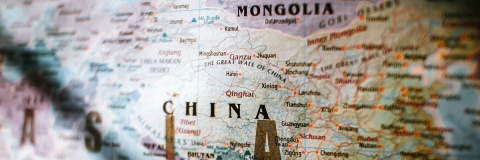

Report from the final conference of the Jean Monnet Centre of Excellence for the Study of a Transnational Europe (CESTE2)
3
The Jean Monnet Centre of Excellence for the Study of a Transnational Europe (CESTE2) presented research findings on narratives and citizenship at its final conference. It is determined to maintain its strong rooted research in Europe and EU during these times of Brexit when it is especially crucial to dissipate any fog in the channel.
Dr Anne Murphy, Dean of the Faculty of Humanities and Social Sciences opened the CESTE2 conference praising its cross-interdisciplinary research strengths. This is the second round of this prestigious project funded by the EU. The CESTE project has included multiple outreach and public dissemination activities. In terms of its academic research, it was divided into three interrelated streams that share a common concern with Brexit, its impact, and broader disintegration tendencies in the EU. Read more about CESTE2 here.
Many of CESTE2 conferences moved online due to Covid, however it has its advantages connecting with many more academics as well as the public not just in Portsmouth and the South East of England but further afield and globally as well.
In this, the final conference for CESTE2, a panel of expert academics presented findings on narratives and counter narratives on China and Eastern Europe as well as considering questions of identity, belonging, migration and citizenship.
The panel consisted of presenters and discussants:
- Richard McMahon, University College London
- Rafał Riedel, Opole University
- Aminul Islam, Tallinn University
- Aleksandra Sojka, Carlos III University of Madrid
- Paul Flenley, Univiersity of Portsmouth
- Charles Leddy-Owen, University of Portsmouth

Representation and Redefinition through Narratives and Counter Narratives
Dr McMahon explored narratives of Chinese scholars on European integration and how they are framed in relation to narratives about the US, as well as China itself. In this context, the presentation shed light on the opaque nature of foreign policy decision-making and the connection between academic and political elites in this context. This was complemented with the discussion of specific developments, such as Xi’s statement on how China should make friends. Cultivating and defining appropriate narratives about friends as well as adversaries will remain an ongoing challenge for China as it embraces its status as one of the most important powers of the world.
In the context of the European continent, Eastern Europe (also defined by some as ‘Central and Eastern Europe’) usually receives attention in terms of its relations to Western Europe and Russia. However, Dr Riedel’s research points to the overlapping concepts of ‘Inter-Marium’ and ‘Tri-Marium’. These are ideas originating from Poland which call for closer regional integration and cooperation between Eastern European countries. After being seen as the periphery of either Western Europe or Russia for so long, Eastern European countries are eager to adopt and advance narratives that put Eastern Europe in the centre.

The Puzzle of European Identity
Identities of immigrants, refugees, migrants, and European citizens were presented and theorized in the second panel chaired by Dr Nora Siklodi. Suggesting Estonia’s possible imagined immigration crisis – even though the country only welcomes 250–300 refugees annually – is sometimes more critical than actual immigration. Dr Islam argued that presenting real stories from immigrants will enable society to see stories of migration through a human, rather than a numerical, lens. Being able to see authentic representations also encourages immigrants to embrace their own identities.
Subsequently, Dr Sojka discussed national versus European identity along with the emergence of a collective identity. She noted that a difference between internal and external migrants became crystallised over time in the context of the European Union. In 2000, there was no differentiation between types of migrants (non-EU and EU). The past 15 years brought immense change in this regard. Nevertheless, existing research demonstrates that European identification at the individual level correlates with cosmopolitan attitudes and openness to non-EU immigration. Those citizens who self-identity as Europeans should accept other migrants and be more open.
…and with that, I didn’t know that I didn’t know!
Fascinating and thought-provoking presentations, raising further questions about the UK's involvement in Europe. Despite Brexit, the UK will always have a stake in European societal and geopolitical change.
This is most certainly a watch this space moment…
Follow us on twitter at @UoP_CESTE2

This project has been funded with support from the European Commission. This publication reflects the views only of the author, and the Commission cannot be held responsible for any use which may be made of the information contained therein.
